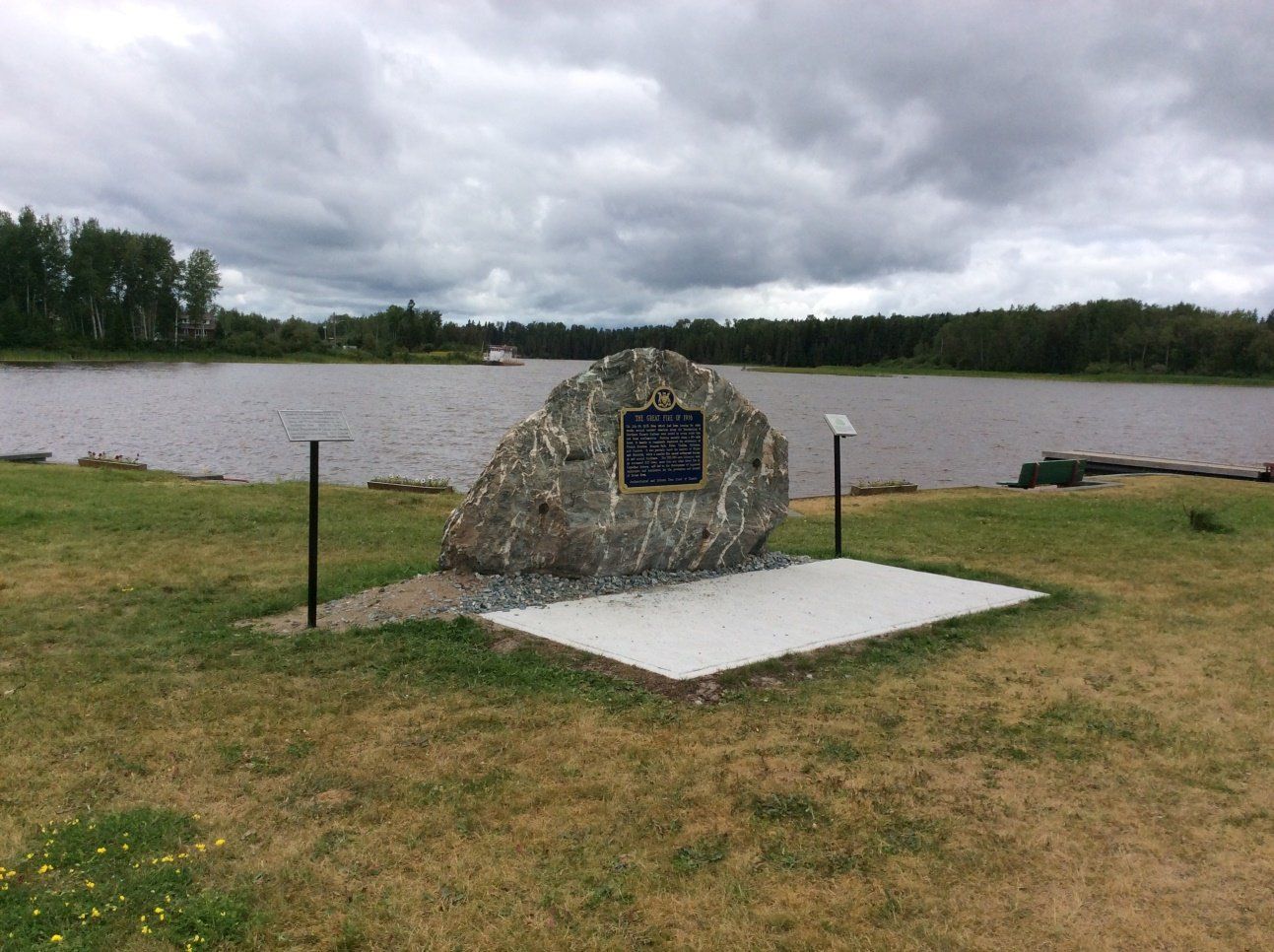The Great Fire of 1916 - Matheson, Ontario, Canada
In 1902, the Temiskaming and Northern Ontario Railway began construction from North Bay to New Liskeard in the Timiskaming District in order to colonize Northern Ontario. During the construction, silver was discovered in 1903 at Cobalt, just south of Haileybury. This was followed quickly by the discovery of gold and the establishment of gold-mining operations in Porcupine, Timmins, and Kirkland Lake.
By 1908, the T. & N.O. Railway had reached Cochrane and settlers had begun to arrive. Small hamlets sprang up along the right of way where the railroad carved itself through the boreal forest. Settlers soon discovered that the clay belt soil between Cochrane and Matheson was capable of sustaining hay and root crops, but it was back-breaking work to clear the area for farming.
There had been no rain for several weeks in July of 1916 and the woods were extremely dry, but this did not deter the settlers from clearing the land using the traditional slash-and-burn method. This meant cutting down the trees for building materials, for fuel, or for sale and burning the remaining unwanted vegetation to make way for farmland. Railway workers were also using the same method to clear vegetation from along the railway tracks.
Small fires burned constantly and homesteaders were used to smelling smoke on a daily basis. By July 29th, several small fires had been united by high winds and turned into one gigantic inferno. The fire raged in a line extending some 64 kilometres from Nellie Lake to Ramore, burning easterly at a rate of 40-64 kilometres per hour.
“In that one terrible day, the settlements of Iroquois Falls, Porquis Junction, Kelso, Nushka, Matheson and Ramore were largely or completely destroyed, and the hamlets of Homer and Monteith partially razed. A smaller fire largely levelled Cochrane and did much damage in the surrounding region.
“For several days, the fire shared headlines with the First World War, and the newspapers were filled with stories of horror and heroism, of sudden death and miraculous escape. Most of those who survived owed their lives to the proximity of some body of water, while others escaped by train. The actual death toll will probably never been known, but the official estimate stands at 223 – the majority of them in Matheson and Nushka. (For a complete list of those who perished in the fire, click here.)
“Fire-fighting efforts were largely futile and it was only rain early in August that finally removed the danger of the further outbreak. For Porquis Junction and Cochrane it had been the second disastrous fire in five years. The “Matheson Fire” was by far the worst in Canadian history, from the standpoint of lives lost, and it was exceeded in this respect only by three other forest fires in all of North America. It destroyed some 500,000 acres of forest, bad enough though less than the destruction caused by the Porcupine Fire of 1911 and the later Haileybury Fire of 1922.”
(The above is from the Ontario Heritage Foundation
but the page has been archived and is no longer available at its original source. It may be available here using the Wayback Machine portal.)
On Friday, July 29, 1966 an historical plaque was unveiled beside Highway 11, just south of Matheson, which reads:
In 2003, the plaque was relocated to Alarie Park on Highway 11, Matheson. In 2016, the plaque was relocated to a small park on the Black River in Matheson where Highway 101 crosses the river. It was here, on July 29th, that a ceremony was held to commemorate the 100-year anniversary of the disastrous forest fire of 1916.
My husband and I travelled to Matheson the week after the memorial ceremony to see the family monument in Hillcrest Cemetery and to pay our respects, a hundred years late, to a group of people I hope will never be forgotten.
With the help of Annette and William at the Thelma Miles Historical Museum in Matheson, Judy at the Matheson Public Library, cousin Lois for assistance with access to archived copies of Toronto newspapers, the late Shirley Forth who provided a moving account of this tragedy in her book A Dutch Cooper’s Legacy: An Ouderkirk Story From 1660, family stories and photos from various descendants of the survivors, information shared in the book Killer in the Bush: The Great Fires of Northeastern Ontario
by Michael Barnes, and of course my best friend, Google, I have written what I believe to be as accurate a recount of the day as is possible one hundred years later.

